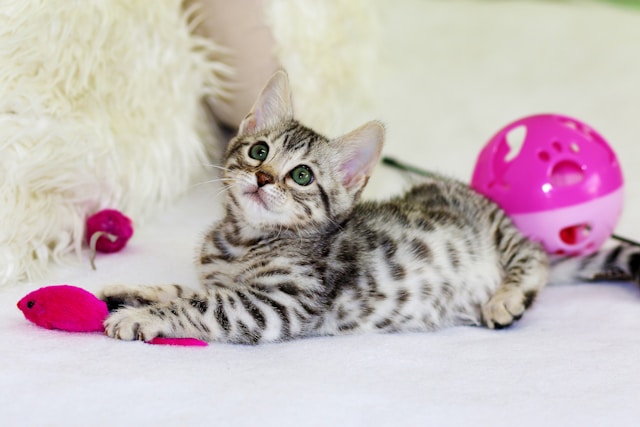Feline panleukopenia (FP), also known as feline distemper, is a highly contagious and often deadly viral disease that affects cats. It is caused by the feline parvovirus, which targets rapidly dividing cells in the cat’s body, including those in the bone marrow and intestines. Understanding how to recognize the symptoms, prevent the disease, and care for your cat can make a significant difference in keeping your feline friend safe and healthy.
What is Feline Panleukopenia?
Feline panleukopenia is a viral illness that severely impacts the immune system and digestive tract of infected cats. The virus is highly resistant and can survive in the environment for long periods, making it challenging to control once an outbreak occurs.
Causes and Transmission
- Viral Agent: Feline panleukopenia is caused by the feline parvovirus, which is different from the canine parvovirus but shares similar characteristics.
- Transmission: The virus spreads through direct contact with infected cats, their feces, or contaminated objects such as food bowls, bedding, and litter boxes. The virus can also be transmitted indirectly through contaminated surfaces or by humans who have come into contact with infected animals.
Symptoms of Feline Panleukopenia
The symptoms of feline panleukopenia can vary depending on the severity of the infection and the age of the cat. Common signs include:
1. Gastrointestinal Symptoms
- Severe Diarrhea: Often watery and can be blood-streaked, leading to dehydration.
- Vomiting: Cats may vomit frequently, which can contribute to dehydration and loss of appetite.
- Loss of Appetite: Affected cats often refuse to eat, leading to weight loss and further weakness.
2. Systemic Symptoms
- Fever: Cats may develop a high fever as their body attempts to fight off the infection.
- Lethargy: Infected cats usually appear very weak, tired, and less active.
- Dehydration: Due to vomiting and diarrhea, cats can quickly become dehydrated, which is a serious condition requiring immediate attention.
3. Hematologic Symptoms
- Low White Blood Cell Count: The virus targets and destroys white blood cells, which impairs the cat’s ability to fight infections and increases susceptibility to secondary infections.
- Anemia: Decreased red blood cell count may occur, leading to signs of anemia such as pale gums and lethargy.
4. Neurological Symptoms (Rare)
- Ataxia: In rare cases, particularly in kittens, the virus can affect the nervous system, leading to coordination problems and tremors.
Diagnosis of Feline Panleukopenia
Diagnosing feline panleukopenia typically involves a combination of clinical evaluation and diagnostic tests:
- Physical Examination: The veterinarian will assess the cat’s overall condition, check for symptoms such as dehydration and fever, and evaluate the gastrointestinal system.
- Blood Tests:
- Complete Blood Count (CBC): Can reveal a low white blood cell count and signs of anemia.
- Serology: Testing for the presence of antibodies or viral antigens can confirm the diagnosis.
- Fecal Tests: Sometimes, fecal samples are analyzed to detect the presence of the virus.
- Imaging: In severe cases, X-rays or ultrasounds might be used to assess the extent of damage and fluid accumulation.
Treatment Options
There is no specific antiviral treatment for feline panleukopenia, so management focuses on supportive care to help the cat recover and manage symptoms.
1. Supportive Care
- Fluid Therapy: Intravenous fluids help combat dehydration, maintain electrolyte balance, and support overall hydration.
- Nutritional Support: Cats with panleukopenia often require special feeding techniques, such as feeding tubes or highly digestible diets, to ensure they get the necessary nutrients.
- Anti-Nausea Medications: To control vomiting and encourage eating.
2. Medications
- Antibiotics: To prevent or treat secondary bacterial infections that arise due to the compromised immune system.
- Pain Management: Medications to alleviate discomfort and improve quality of life.
3. Isolation
- Quarantine: Infected cats should be kept away from other animals to prevent the spread of the virus.
4. Environmental Management
- Disinfection: Thorough cleaning and disinfection of the cat’s environment, including litter boxes and bedding, with a suitable disinfectant like bleach to kill the virus.
Prevention Strategies
Preventing feline panleukopenia is crucial for keeping your cat safe and healthy. Key preventive measures include:
1. Vaccination
- Core Vaccine: The most effective way to prevent feline panleukopenia is through vaccination. The feline distemper vaccine is part of the core vaccination series (FVRCP) and is typically administered to kittens starting at 6-8 weeks of age, with booster shots every 3-4 weeks until 16-20 weeks of age. Adult cats should receive regular booster vaccinations according to your veterinarian’s recommendations.
2. Hygiene
- Regular Cleaning: Maintain good hygiene practices in multi-cat households or environments by regularly cleaning and disinfecting all surfaces, litter boxes, and feeding dishes.
- Isolation of Sick Cats: Ensure that any sick cats are isolated from healthy ones to reduce the risk of spreading the virus.
3. Avoiding High-Risk Areas
- Limit Exposure: Avoid exposing your cat to high-density environments where the virus may be more prevalent, such as shelters or boarding facilities, unless your cat is fully vaccinated.
4. Health Monitoring
- Regular Check-ups: Schedule regular veterinary check-ups for your cat to monitor their health and ensure they are up-to-date with vaccinations.
Conclusion
Feline panleukopenia is a serious and potentially fatal disease, but with proper prevention and management, the risk can be significantly reduced. Vaccination is the cornerstone of prevention, while good hygiene and timely medical care play vital roles in managing and treating the disease. By staying informed about the symptoms and taking proactive steps to protect your cat, you can help ensure their health and well-being.
If you suspect your cat may have panleukopenia or if you have concerns about their health, consult your veterinarian immediately for an accurate diagnosis and appropriate treatment. Keeping up with regular veterinary care and vaccinations is essential in safeguarding your feline companion from this dangerous diseas











Leave a Reply